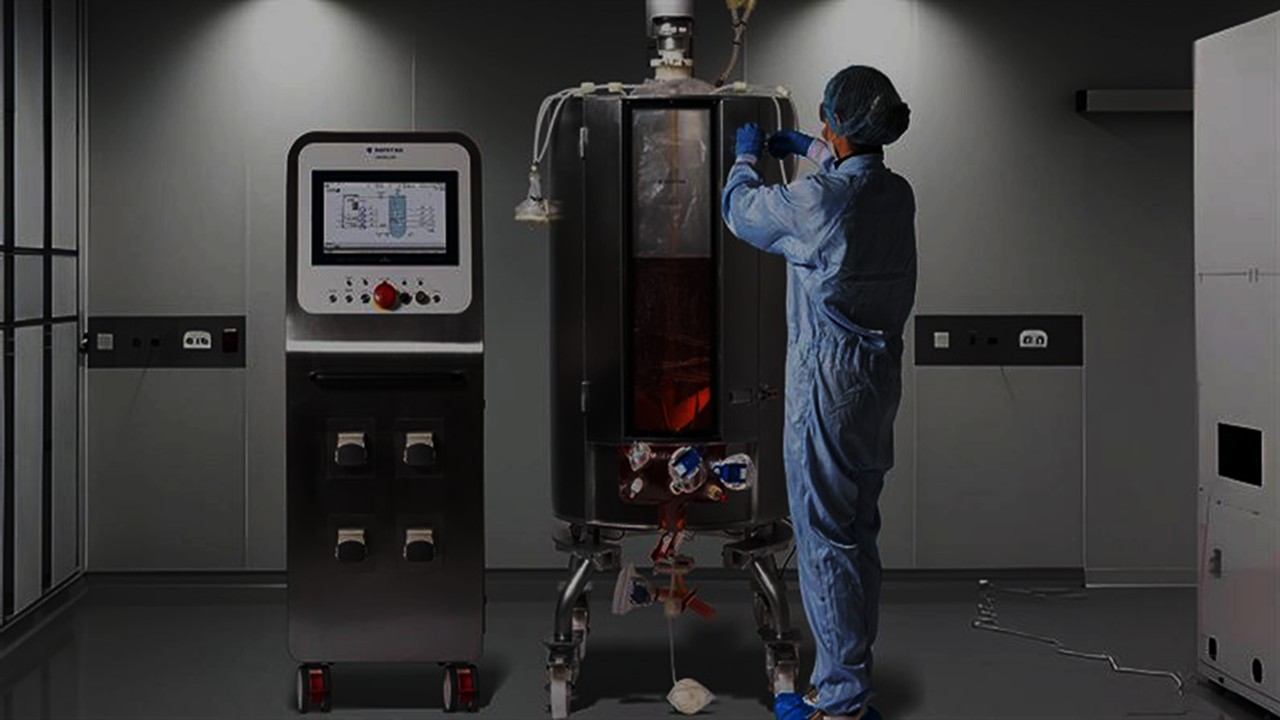Beyond Forecasts: Rethinking Time as a Biological Variable
The modern biotech supply chain is often described as a network of precision—cold chains humming with temperature sensors, just-in-time deliveries orchestrated by algorithms, warehouses calibrated down to the molecule. But behind this pristine architecture lies a far messier antagonist: time itself, in its most cyclical and chaotic form—seasonality. Far from being an afterthought, seasonal variation is emerging as a primary modulator of biotechnological logistics, subtly but powerfully shaping how inventory flows, expires, and even behaves. It isn’t just a matter of weather delays or harvesting schedules; it’s about how biological systems respond to time-linked environmental shifts, and how those ripple through every node in the supply network. What we call “inventory” in biotech is more than stock—it’s life in transit, and that life has a rhythm.
Consider the manufacturing of biologics—protein therapeutics, monoclonal antibodies, and cell-based therapies. These materials are exquisitely sensitive to environmental fluctuations, not just in storage but in their upstream synthesis. Media components derived from agricultural feedstocks (like soy hydrolysates or serum) are seasonally variable in composition, meaning that the same cell line may behave differently in June than in January. This variability creates batch-to-batch drift, which isn’t always detected until late in the production cycle, making real-time inventory corrections nearly impossible. Time, in this context, introduces not only delays but subtle biochemical distortions that undermine the very notion of lot equivalence.
Seasonality also transforms logistics into a game of thermodynamics. Transporting cold-chain biologics through tropical zones in summer is not merely a matter of passive insulation—it becomes an active battle against entropy, where each link in the chain must compensate for increased thermal load. The cost isn’t just financial but kinetic: degradation reactions accelerate, shelf-life projections shorten, and contingency buffers must expand. This translates to greater inventory holdbacks and redundancy—strategies that, while protective, inflate inventory carrying costs and strain storage capacities. In essence, summer becomes a multiplier for logistical entropy.
In vaccine distribution, seasonality assumes an even sharper edge. Demand spikes in sync with flu cycles or epidemic waves, but production cycles may be misaligned due to regulatory lead times and raw material delays. The result is a synchronization problem: inventory flows mismatched with immunization campaigns, requiring sophisticated forecasting models that go beyond epidemiology into climate-linked behavior analytics. Forecasting future demand becomes not a question of linear regression but a dance between viral epidemiology, temperature-linked travel patterns, and population behavior under seasonal duress.
Biotech companies are beginning to recognize that seasonality isn’t a supply chain variable—it’s a core design constraint. The emerging consensus is to treat environmental temporality as an input to manufacturing strategy, from raw material procurement and production scheduling to distribution network design. Seasonality isn’t just about weather anymore—it’s about thermodynamic noise in a finely tuned biological machine. And if ignored, it doesn’t merely disrupt inventory; it destabilizes the pharmacological fidelity of the entire therapeutic lifecycle.
Thermal Drift and the Cold Chain Illusion
The cold chain is often touted as the gold standard of biotech logistics—an unbroken sequence of refrigerated custody ensuring that biologics remain potent, stable, and unaltered. Yet beneath its sleek infrastructure lies an uncomfortable truth: cold chains are far more thermodynamically fragile than they appear. Refrigeration, after all, is a delaying tactic against molecular chaos, not an elimination of it. The moment a biologic exits the sterile stainless-steel fermenter and enters the world of truck docks and air freight, it begins an entropic journey whose tempo accelerates with seasonal extremes. And while winter threatens freezing incidents and condensation spikes, summer imposes a subtler enemy—thermal drift.
Thermal drift is not an overt failure but a creeping deviation—a sustained exposure to near-threshold temperatures that, over time, alters the internal kinetic landscape of sensitive biomolecules. For protein biologics, even a few hours above ideal temperature ranges can induce partial unfolding or aggregation events invisible to routine QC tests. Lipid-based delivery systems, like those used in mRNA vaccines, are particularly susceptible; their bilayers phase-shift at narrow temperature margins, affecting drug release kinetics downstream. Cold chain standards assume stability zones, but these zones narrow significantly during seasonal peaks when cooling systems struggle to maintain delta-T under high ambient loads. And unlike mechanical failure, thermal drift rarely announces itself—it simply accumulates until the drug product underperforms or fails post-administration.
Much of the problem lies in the illusion of homogeneity. A refrigerated truck may report acceptable internal temperatures at its sensor nodes, but microclimates within pallets, boxes, and vials can differ drastically. The thermal inertia of packaging, the orientation of inventory within transport units, and even the sequence of door openings during loading can create gradients of exposure. These gradients intensify during summer months, when external temperatures cause compressor cycling to shorten and airflow uniformity to deteriorate. Over time, these thermal perturbations create a chemical stratification of inventory—identical lot numbers, but subtly different molecular realities.
Strategies to mitigate thermal drift increasingly rely on real-time temperature logging and predictive degradation modeling. But these approaches, while valuable, remain reactive—they report damage after it begins. What the industry needs is a shift toward anticipatory thermal control: season-aware routing algorithms, dynamic packaging systems that adapt insulative properties based on climate forecasts, and redundancy planning that includes sacrificial inventory buffers during high-risk periods. Such approaches demand more than logistics expertise—they require physicochemical modeling of drug degradation pathways and an intimate knowledge of how time-temperature integrals interact with drug stability profiles.
Ultimately, the cold chain is only as robust as its weakest thermal link. Seasonality exposes these links not with dramatic breakdowns, but with prolonged stressors that bend rather than break systems—until one day, the bend becomes irreversible. The illusion of a perfect cold chain persists only until we map its internal temperature history with the granularity that seasonality demands. In that mapping, we confront a truth that should have always been obvious: biology obeys the calendar, even when our supply chains pretend it doesn’t.
Biological Inputs with Seasonal DNA: The Raw Material Conundrum
Biotech supply chains often begin not with steel tanks or clinical vials, but with fields and farms—places where biology is less controlled and far more seasonal. Many upstream inputs in biologic manufacturing, particularly growth media components like peptones, soy hydrolysates, or serum proteins, originate from agricultural or animal sources. These inputs carry with them the invisible scars of seasonality: shifts in nutrient density, lipid profiles, glycosylation patterns, and even contaminant load. Unlike synthetic APIs, these biological inputs are not formulaic—they are ecological snapshots of when and where they were harvested. And once introduced into a bioprocess, their seasonal fingerprints ripple outward, destabilizing everything from cell growth kinetics to protein folding yields.
Consider fetal bovine serum, a cornerstone in many upstream cultures. Its composition is exquisitely sensitive to the animals’ diet, hydration, stress levels, and ambient temperature—factors that vary wildly across seasons. Serum collected in late summer may be richer in lipid content, altering membrane fluidity in cultured cells and changing their expression profile. Likewise, plant-based hydrolysates vary based on harvest time and soil moisture, which in turn shift amino acid profiles and micronutrient loads. These variations are seldom captured in certificates of analysis, yet they have real effects on cell metabolism, affecting protein glycosylation patterns and downstream purification burdens. In high-resolution biomanufacturing, such microvariations accumulate into macrodisruptions.
The problem is compounded by the just-in-time philosophy that governs many biotech procurement models. When suppliers operate with lean inventories, any delay caused by seasonal events—floods, droughts, late harvests—leads to rushed substitution or under-characterized lots entering the process. Even when suppliers manage to deliver on time, batch-to-batch variability rises during seasonal transitions, catching manufacturers off-guard. Quality by Design frameworks can buffer against this with extensive raw material characterization, but only when seasonality is anticipated. Too often, material variability is attributed to “supplier issues” when the true culprit is a misalignment between biological sourcing and manufacturing rhythm.
Efforts to mitigate seasonal raw material risk are slowly becoming more sophisticated. Some manufacturers are investing in feedforward analytics: models that correlate supplier climate data, harvest cycles, and raw material attributes to predict process outcomes. Others are shifting toward fully synthetic or recombinant growth factors to eliminate agricultural dependency altogether, though cost remains a barrier. Even within agricultural sourcing, some companies are exploring climate-controlled bioreactors to stabilize the production of key inputs like yeast extracts or algal lipids. But these efforts require investment in data infrastructure, cross-functional collaboration, and a willingness to redesign procurement philosophy around biological realism.
The lesson here is that raw materials are not inert—they are temporal, ecological, and variably alive. The idea that a peptone harvested in March is functionally equivalent to one in October is no longer defensible at the level of molecular resolution biotech demands. The future of inventory strategy must therefore begin upstream, in the fields and pastures where biotech truly begins. Only by embracing the seasonality of our biological inputs can we hope to build supply chains that are not merely efficient, but scientifically honest.
Temporal Mismatches in Clinical Demand: Forecasting Failure at Scale
In the tightly regulated universe of biotechnology, clinical demand is rarely constant. It pulses—driven by disease seasonality, regulatory timing, institutional procurement cycles, and unpredictable public health events. Yet while the ebb and flow of clinical need are well documented, inventory systems often fail to align with these biological and bureaucratic rhythms. The result is a persistent mismatch between supply readiness and therapeutic urgency. At scale, this misalignment becomes more than an inconvenience—it becomes a systemic vulnerability that undermines patient access, manufacturing efficiency, and fiscal stability.
Take, for instance, seasonal vaccines. Influenza, respiratory syncytial virus (RSV), and now seasonal COVID-19 boosters must all be produced in anticipation of peak demand windows that are narrow and immovable. However, production slots, raw material availability, and regulatory batch release times may not always align with the epidemiological calendar. A two-week delay in clinical release—whether due to transportation, quality control, or even label printing—can render an entire inventory cohort less effective in impact and commercial value. In the worst cases, demand collapses before stock reaches distribution centers, stranding inventory that was manufactured at great biological and economic cost.
Even outside vaccines, chronic therapies exhibit seasonally modulated demand patterns. Autoimmune flares, transplant rejection events, and some infectious diseases follow weather or behavior-linked cycles that affect hospital stocking and outpatient prescriptions. Yet forecasting models in many companies remain static—built around historical averages rather than responsive environmental or patient behavior data. This creates downstream chaos: bullwhip effects in raw material orders, stockouts at points of care, and reactive redistribution of inventory that inflates logistics costs and increases cold-chain risk. The very structure of biotech inventory strategies—centralized, slow-moving, and process-bound—renders them ill-equipped for temporal agility.
One proposed solution is the integration of epidemiological and environmental data into supply chain planning. Rather than relying on demand projections from sales departments, biotech firms are now experimenting with models that use real-time disease surveillance, school closure patterns, and even air quality indexes to forecast clinical need. These models aim to predict not just volume but location and timing, feeding that intelligence back into manufacturing lead times and regional warehousing strategies. This allows for semi-decentralized inventory positioning that can flex with demand curves—bringing biologics closer to the point of care without overburdening any single node.
Still, such adaptive systems require a philosophical shift in how biotech thinks about inventory—not as a buffer against uncertainty but as a dynamic, living mirror of therapeutic need. This demands deeper integration between clinical affairs, regulatory strategy, manufacturing, and supply chain design. It requires not only faster production technologies but also more intelligent distribution frameworks that can re-route, re-allocate, or re-prioritize based on season-sensitive demand models. In essence, inventory must stop chasing demand and begin co-evolving with it—guided by a shared understanding that biology does not care about quarterly forecasts or fiscal years.
Season-Driven Regulatory Constraints: Compliance in Flux
In biotechnology, compliance is often perceived as a fixed destination—a checklist of regulatory expectations anchored by stability data, Good Manufacturing Practices (GMP), and batch record completeness. But what if the terrain itself shifts? Seasonality introduces a temporal instability not just into the biological products but into the regulatory frameworks meant to govern them. Stability protocols, validation windows, shipping qualifications, and expiry dating—all of these compliance pillars are subtly but unmistakably influenced by the calendar. And yet, too few regulatory strategies account for seasonality as a variable that modulates both risk and regulatory burden.
One of the most significant seasonal pressures on compliance is temperature qualification. Products that demonstrate impeccable shelf-life under standard stability protocols may degrade faster under tropical summer distribution—despite never breaching explicit temperature excursions. Regulatory filings rarely model the compound effects of prolonged ambient heat, high humidity, and inconsistent refrigeration that occur during summer shipping in low-infrastructure geographies. Worse still, qualification testing is often done under contrived, idealized transport scenarios that do not reflect the thermodynamic chaos of real-world distribution. When regulators later review post-market stability failures, the missing factor is often not procedural—it’s temporal.
Packaging also reveals seasonal compliance fragility. Many packaging systems are qualified under uniform laboratory conditions—static humidity, controlled temperature, no UV exposure. However, biotech materials traveling through variable climates are exposed to a spectrum of environmental insults that compromise packaging integrity: condensation inside boxes during winter transitions, adhesive breakdown in summer heat, and compromised labels from fluctuating dew points. These aren’t just aesthetic issues; they impact barcode readability, sterility assurance levels, and even patient safety when instructions degrade. Seasonal cycles thereby test the true robustness of what packaging qualification claims to guarantee.
Seasonality also affects the timing of regulatory submissions and inspections. In regions with monsoon seasons, regulatory inspections are often delayed or rushed ahead of weather disruptions. Submissions tied to specific production lots must sometimes wait for seasonal availability of key materials or for operational windows in climate-sensitive facilities. These delays can cascade: regulatory reviews hinge on timelines of manufacturing data, stability readouts, and distribution logistics, all of which can be seasonally misaligned. For emerging markets or contract manufacturing sites in climatically volatile regions, these disruptions can spell multi-quarter delays in product launch or post-approval changes.
Forward-thinking regulatory strategies now involve season-aware filing models—submitting stability data that reflect seasonal exposure, qualifying packaging across climate zones, and negotiating with regulators to acknowledge real-world distribution conditions. In some cases, manufacturers are designing dual-path filing approaches: one optimized for temperate logistics, another for equatorial or high-risk weather zones. These strategies acknowledge what compliance frameworks have long resisted: that regulation doesn’t exist in a vacuum—it exists in weather, in transit time, and in the molecular impact of solar load on a warehouse roof in August. Regulatory resilience, then, is no longer about more documentation—it’s about more realism.
Inventory Segmentation and Seasonal Buffering: Designing for Disruption
Traditional inventory models in biotech rely heavily on centralization and uniformity—high-value stock positioned at key distribution nodes, replenished based on historical demand and bounded by expiry constraints. But seasonality challenges these assumptions by introducing temporal discontinuities in both supply and demand. To navigate this, firms are turning to inventory segmentation: the strategic differentiation of inventory policies across geographies, climate zones, product types, and even risk tolerances. Rather than treating all biologics or all warehouses the same, this approach tailors buffer levels, replenishment cadence, and even packaging to the seasonal realities of each micro-market. In short, inventory becomes more modular, resilient, and attuned to disruption.
Segmentation begins with climatic risk stratification. Warehouses in regions with high summer temperatures or winter freeze-thaw cycles may hold more inventory or stock it in seasonally rotated insulated packaging. Similarly, high-variability demand zones—such as rural clinics affected by seasonal disease spikes—might receive more aggressive pre-positioning during relevant months. By assigning climate-informed risk scores to each distribution point, companies can engineer inventory depth where it’s most needed, while avoiding excess where risk is low. This strategy reframes buffering as precision investment rather than blanket overstocking—a shift that is both cost-effective and pharmacologically rational.
Buffer inventory, long regarded as an inefficiency, finds new legitimacy in a seasonal world. Unlike generic stockpiling, season-aware buffering accounts for both environmental stress and demand surge probabilities. A buffer meant for tropical summer may have different packaging, shelf-life windows, or storage conditions than one intended for cold-chain urban deployment. Likewise, buffers for cell therapies with narrow administration windows may include backup cryostorage or emergency shipment plans triggered by forecasted weather events. These tailored buffers act not only as shock absorbers but as thermal and logistical dampers—absorbing disruption before it compromises therapeutic integrity.
Inventory segmentation also encourages manufacturing flexibility. Rather than producing a uniform lot and distributing it indiscriminately, companies may produce multiple micro-lots optimized for regional climate zones or disease timelines. This allows for targeted batch deployment, reducing reliance on post-manufacturing logistics to compensate for environmental mismatch. In such models, manufacturing becomes not just an upstream function but an adaptive node in a responsive system—where the factory floor reacts to seasonal trends just as urgently as warehouse managers or fleet coordinators.
Ultimately, segmented and buffered inventory systems create a new form of biological insurance—an architecture that anticipates entropy instead of merely reacting to it. These systems are not necessarily more complex; they are more intelligent, designed with the understanding that time is not a flat variable. By embracing temporal heterogeneity—geographical, climatological, and epidemiological—biotech firms can build inventory frameworks that breathe with the seasons, not break under them. In a landscape where every molecule matters, this evolution isn’t just operationally savvy—it’s clinically essential.
Toward Predictive Resilience: The Convergence of Climate, AI, and Supply Chain Biology
As the biotech sector wrestles with the realities of seasonality, the next frontier is no longer reactive adaptation—it is predictive resilience. This new paradigm is not about weather-proofing infrastructure or expanding buffers, but about preempting disruption through a fusion of climate data, AI algorithms, and biologically intelligent supply networks. Predictive resilience posits that environmental volatility is not merely survivable but potentially optimizable—if it can be decoded and embedded into the fabric of decision-making. For biotech supply chains, this means designing systems that anticipate—not just respond to—seasonal threats to molecular fidelity and therapeutic availability.
The technical backbone of this vision is real-time data integration. Meteorological APIs, disease outbreak surveillance, transport infrastructure alerts, and even satellite imaging now feed into supply chain control towers, offering unprecedented environmental granularity. AI engines ingest these data streams to forecast disruptions before they manifest: a late monsoon signals delays in serum harvesting; a heatwave in Rajasthan warns of probable cold-chain breach; a sudden uptick in asthma incidence in São Paulo recalibrates regional inventory levels. The chain no longer reacts to seasonality—it learns from it. And over time, it learns faster than humans ever could.
Machine learning models are particularly suited to mapping nonlinear, multi-input disruptions—exactly the kind that define biotech seasonality. Instead of static risk thresholds, AI enables dynamic response modeling, where every shipment, stock point, and facility is scored against evolving environmental parameters. These models can suggest alternative routing, temporary warehousing shifts, or even formulation changes when certain transport corridors become nonviable. In manufacturing, AI tools can forecast how upstream raw material variability—linked to weather or crop yield data—may affect yield and product performance, adjusting production plans accordingly. The result is a supply network that behaves less like a linear pipeline and more like a dynamic ecosystem.
Yet resilience is not just computational—it is organizational. Predictive supply chains require human teams trained not merely in logistics but in climate science, pharmacokinetics, and systems biology. They demand new governance models where environmental data scientists sit alongside operations planners and where decisions are made jointly by algorithms and interdisciplinary humans. The emergence of roles like “climate supply strategist” or “AI-integrated bioprocess forecaster” reflects this evolution—where biotechnology becomes not just a product domain but a systems field. This shift is no longer optional as the biosphere grows more unstable and therapeutic complexity deepens.
What emerges is a biologically fluent supply chain—one that understands the thermodynamic fragility of its payloads, the volatility of its sourcing geographies, and the temporal behavior of its patients. It doesn’t seek perfection, but responsiveness. It accepts that entropy cannot be eradicated but can be forecast, deflected, and, in some cases, used to its advantage. As climate shifts accelerate and the molecular sophistication of biotech therapies increases, only those supply chains that evolve into predictive organisms will survive. The rest will crumble—not from sudden catastrophe, but from the slow and seasonal erosion of systems that failed to listen to time.
Engr. Dex Marco Tiu Guibelondo, B.Sc. Pharm, R.Ph., B.Sc. CpE
Editor-in-Chief, PharmaFEATURES

Subscribe
to get our
LATEST NEWS
Related Posts

Clinical Trial Supply Chain
Neural Freight: How Convolutional Models Are Reinventing Clinical Trial Logistics
CNNs are now driving smarter, faster, and more resilient clinical trial supply chains through pattern recognition and predictive optimization.

Clinical Trial Supply Chain
Cold Routes, Critical Cargo: Rethinking Fleet Strategy in Oncology and Immunology Trials
The choice between dedicated and shared transportation fleets in oncology and immunology trials critically affects cost, logistics, and the integrity of highly sensitive biologic materials.
Read More Articles
Mini Organs, Major Breakthroughs: How Chemical Innovation and Organoids Are Transforming Drug Discovery
By merging chemical innovation with liver organoids and microfluidics, researchers are transforming drug discovery into a biologically precise, patient-informed, and toxicity-aware process.
Tetravalent Vaccines: The Power of Multivalent E Dimers on Liposomes to Eliminate Immune Interference in Dengue
For the first time, a dengue vaccine candidate has demonstrated the elusive trifecta of broad coverage, balanced immunity, and minimal enhancement risk,













